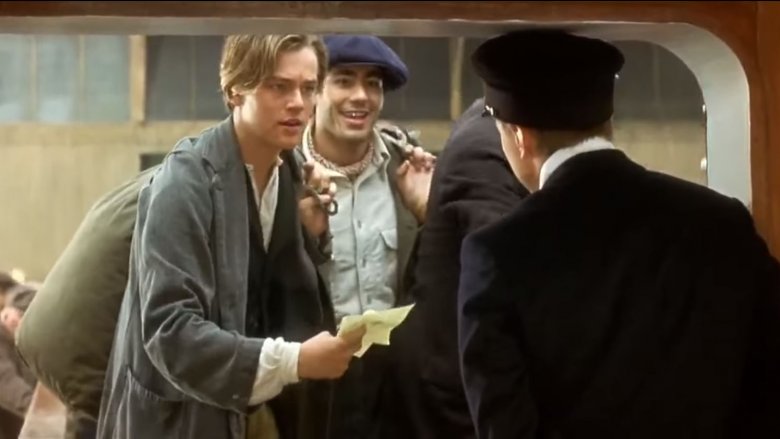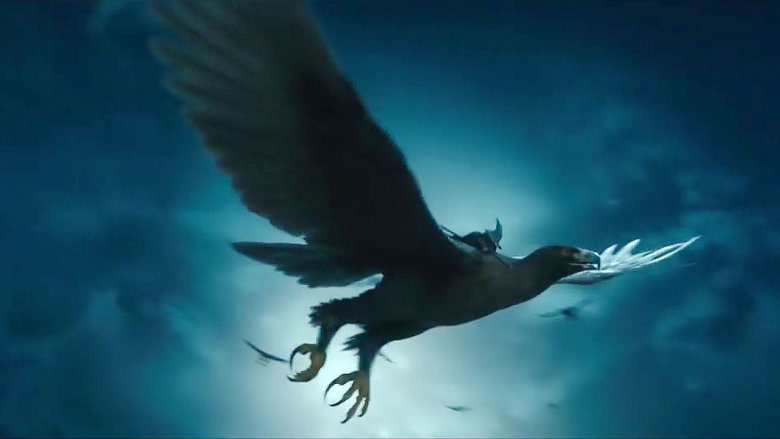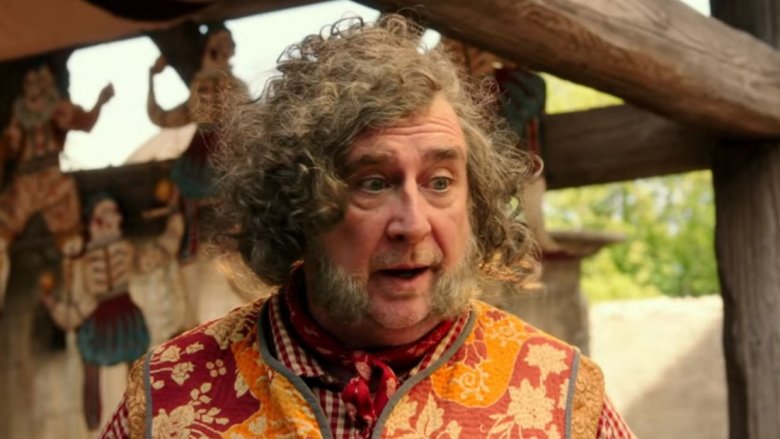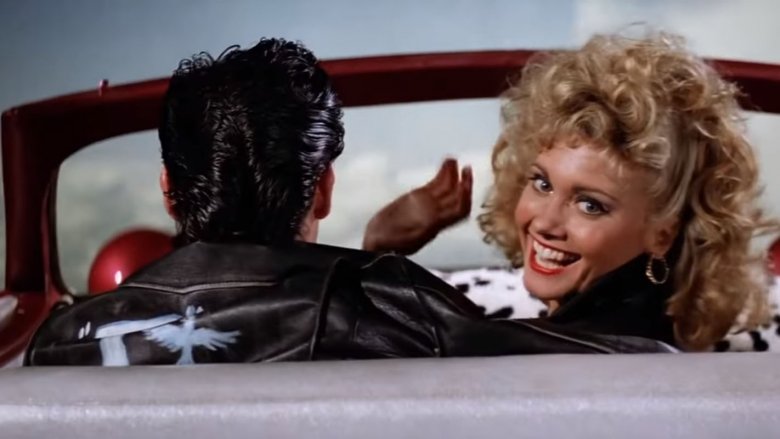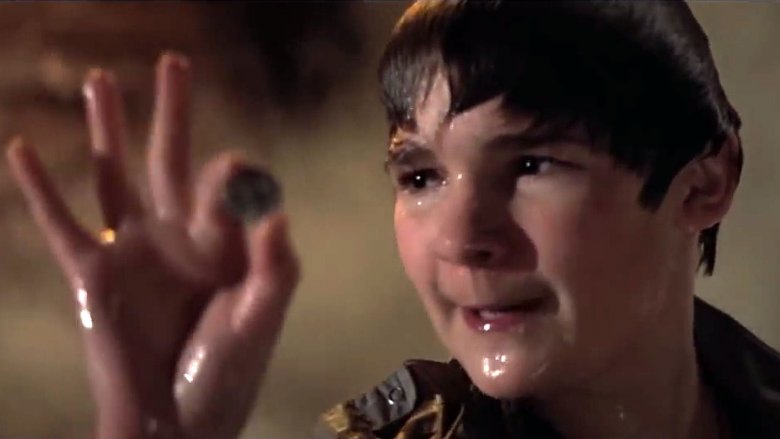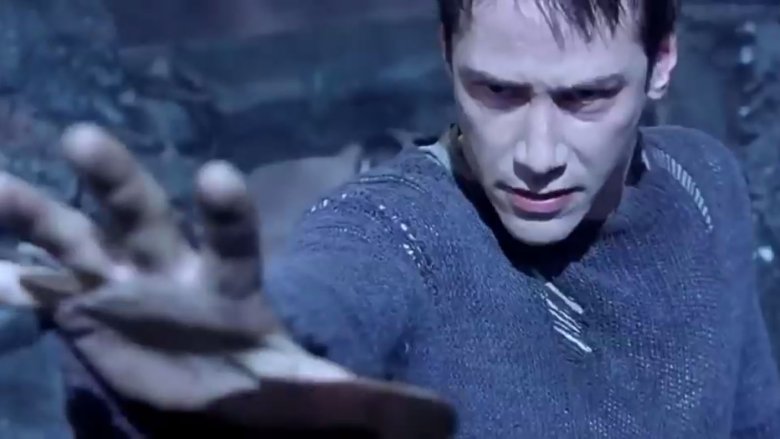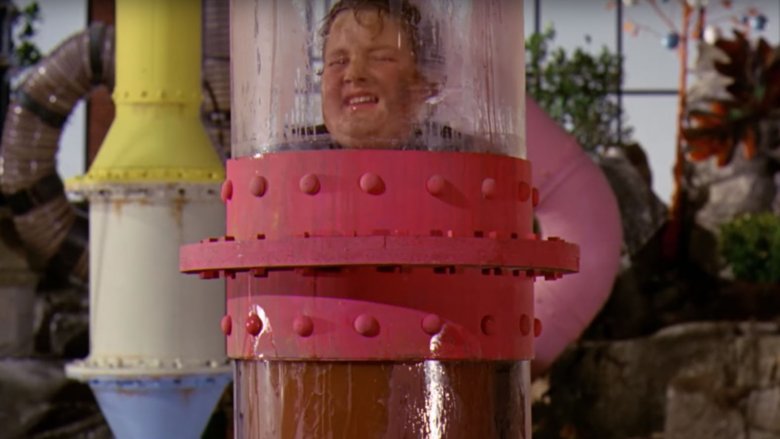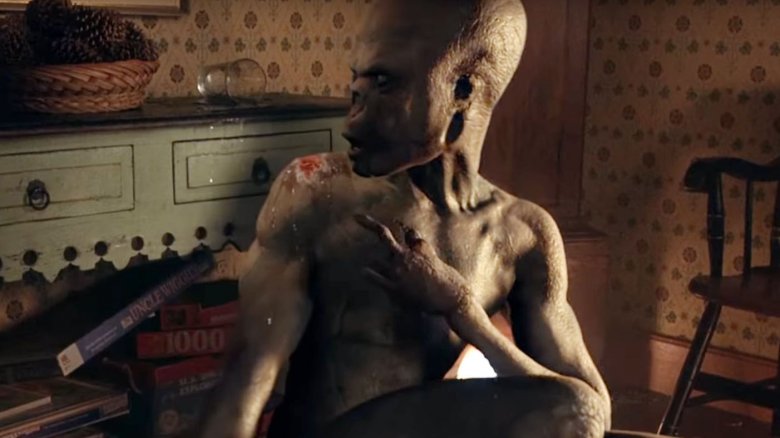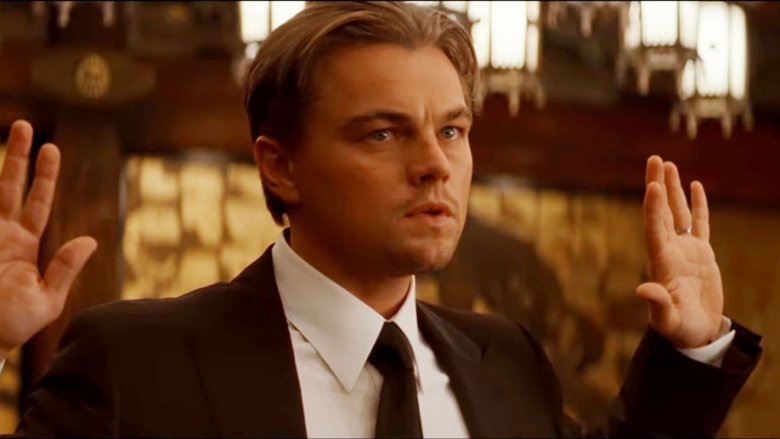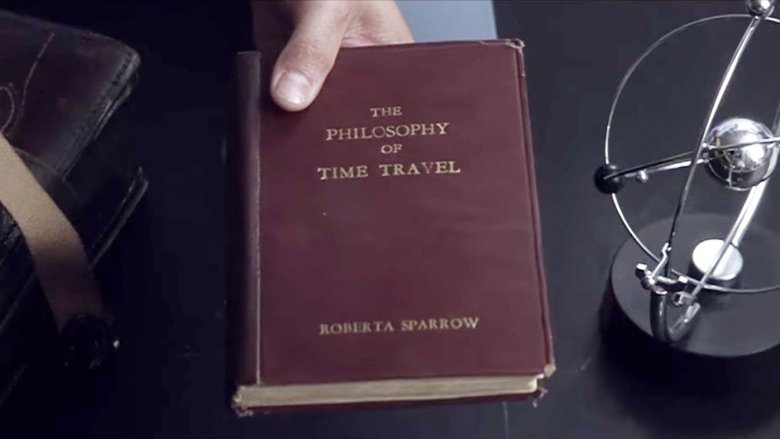Movies That Only Make Sense If You Follow The Fan Theories
Some movies ask a little bit more of the audience than others. It's easy to mindlessly enjoy the latest Michael Bay explosion-fest. That doesn't work as well with the films of Christopher Nolan or David Lynch. In order to make sense of intentionally ambiguous storylines, gaping plot holes, unconventional narrative structures, or, sometimes, gaping plot holes, you'll have to pay attention to all of the little clues and piece together the story by yourself.
Or you could let someone else figure it all out. The following fan theories may not exactly be canon, but they do explain away some of the biggest conundrums in modern cinema. Turn off your brain, grab the popcorn, and relax. You don't need to do the hard work. Someone else has handled it for you.
Titanic - Jack is a time traveler
Titanic is more about spectacle and romance than historical accuracy, but the movie has a few anachronisms that really stand out—and they're almost all related to Leonardo DiCaprio's character, Jack. In the movie, Jack claims that he went ice fishing at Lake Wissota in Wisconsin, which is a man-made lake created in 1917—five years after the Titanic sank. Jack claims that he sketched portraits near the roller coaster on the Santa Monica Pier, an attraction that wasn't built until 1916. His haircut doesn't match the style of the time, and the rucksack he carries with him wasn't popular until the '30s.
According to one fan, there's only one explanation (aside from shoddy fact-checking on James Cameron's part, at least): Jack is from the future, and has voyaged through time in order to preserve history. As the theory goes, Rose's suicide attempt would've forced the ship to stop while the crew searched for the debutante's body. That would delay the Titanic's cross-Atlantic voyage, which would mean that the Titanic wouldn't be in the right place to hit the iceberg, and modern history would be ruined. By saving Rose, Jack dooms the Titanic's passengers and preserves the timeline.
Far-fetched? Sure, but it's not like James Cameron hasn't messed around with time travel before...
The Lord of the Rings - Gandalf planned to use the eagles all along
Buckle your seatbelts. This one gets nerdy.
"One does not simply walk into Mordor," Boromir states in The Fellowship of the Ring, but for years, fans have been wondering why the Fellowship didn't fly there. Instead of marching all the way across Middle-earth and hoping that all of the various monsters, evil wizards, and warring factions didn't derail the journey, it seems like it'd be a lot faster—and a lot safer—for Gandalf to call on his eagle friends and have them drop Frodo and the One Ring off at the steps of Mount Doom. After all, the eagles have no problem flying all the way to Mordor to rescue Frodo and Samwise after the Ring's destruction and Sauron's demise.
Reddit user VulcanDeathGrip thinks he's found the answer. VulcanDeathGrip surmises that calling on the eagles for help was Gandalf's plan all along. As explained in The Fellowship of the Ring, the good guys' best chances require surprise. That's why Gandalf doesn't share his plan with the Fellowship—if one of them was captured and tortured, the whole scheme would be exposed.
Meanwhile, we know from The Hobbit that the eagles live on the northeast side of the Misty Mountains (VulcanDeathGrip has a map, if you need one), meaning that the Fellowship has to cross the mountain range at one of four points if they want to meet up with their feathered allies.
That's the crux of VulcanDeathGrip's theory: in the movie, the Fellowship takes the fastest path towards the eagles' nest, not the fastest path to Mordor. Gandalf mentions that the Fellowship can't take the northernmost route through the mountains because it's too well guarded. Saruman would catch them. The Fellowship tries to cross at the second highest point, Redhorn pass, but they're foiled by a blizzard. Going around the mountains via the gap of Rohan takes the group too far south, leaving the underground Mines of Moria as the only viable crossing point.
And it would've worked, too, if the Balrog hadn't killed Gandalf before he could share his plans with the others. It's not like he didn't try, of course. What were Gandalf's last words before the Balrog dragged him into the pit? "Fly, you fools." That's not just a poetic parting note—that's Gandalf telling Frodo and the others to head for the eagles' eyrie as quickly as possible. They're just too dumb to pick up on the message.
Beauty and the Beast - the entire village is cursed
Disney's live-action Beauty and the Beast remake is a relatively faithful adaptation of the original animated movie, but it takes a few liberties with the source material—and introduces some new wrinkles in the process. For example, when the Beast's curse is lifted, all of his servants transform from pieces of furniture back into human beings. That's the same. However, in the modern version, many of the village's residents are related to the members of the Beast's household—and while the curse has been active for many, many years, they don't seem to be any older than their long-lost family members. While that leads to a number of happy reunions and a satisfying ending, it doesn't make very much sense.
Unless, as Reddit user Hainted postulates, the village is caught in a time-loop that keeps the villagers young. That explains why, for example, Mrs. Potts is the same age as her husband after the enchantress' curse is lifted. It also explains why Belle is so bored in the village: everything is exactly the same, every day. Belle is able to navigate the crowded marketplace without looking where she's going, and notes that the baker hawks the exact same goods every morning. If it feels like she's seen this all before, it's because she has (naturally, once the curse is lifted, time starts to flow like normal).
In fact, Hainted surmises that the time loop might explain why the villagers think Belle and her father are so odd. They moved to the village after the Beast was cursed, and so they age like normal (the villagers don't really know what's wrong, of course—they can't remember more than a few days back—but something strikes them as off). All-in-all, that's fairly convincing, at least more than "she looks like Emma Watson and likes to read," which, let's face it, isn't really strange at all.
Grease - Sandy died on the beach
Grease doesn't exactly thrive on realism—we weren't around at the time, but we're fairly certain that '50s greasers didn't spontaneously burst into song, and no high school student in history has ever looked like 33-year-old Stockard Channing. Still, the film is somewhat grounded throughout its two-hour running time—right up until the end, when Danny and Sandy hop into a shining red convertible and fly into the clouds.
That's an egregious violation of the reality that Grease has built, not to mention the law of physics, and there's only one explanation: Sandy is dead, and the whole movie is a fantasy that plays out in her mind before she kicks the bucket. That's the theory espoused by Buffy the Vampire Slayer herself, Sarah Michelle Gellar, anyway. According to Gellar, when Danny and Sandy relate the story of how they first met in the song "Summer Nights" and Danny sings, "I saved her life, she nearly drowned," he's lying. Sandy actually did drown, and in her final moments, her oxygen-deprived brain created an entire musical fantasy that ends with her literal ascent into heaven.
That's a story that doesn't just explain Grease, it also helps shed some light on its ill-advised sequel. After all, if Grease is a happy dream, then Grease 2 is most likely a nightmare—at least for anyone who's watching it.
The Goonies - the country club is a cover-up
In The Goonies, a group of wealthy real estate developers led by snooty Mr. Perkins threaten the residents of Astoria, Oregon's "Goon Docks" with foreclosure, hoping to force the low-class residents out of their homes in order to make way for a brand new, upscale golf course. The kids who live in that neighborhood, who call themselves "The Goonies," decide to fight back. During their last weekend together, the children discover a complex network of man-made underground tunnels that lead to a long-lost pirate ship that's crammed full of treasure, giving the victims enough money to fight off the developers and preserve their homes.
The Goonies is silly (what's a pirate ship doing in Astoria, Oregon?), but on the surface, there's nothing wrong with that premise—not until you think about it as hard as 87StickUpKid did. In the movie, the kids find themselves under a wishing well, which empties into the tunnels. Someone had to build that. When they pass under the school, the Goonies see exposed pipes and other pieces of plumbing. Someone had to lay those, too.
So, StickUpKid asks, how did the architects and construction workers who built Astoria discover a complex network of tunnels without realizing that there's an entire pirate ship inside? Simple answer: they didn't. In StickUpKid's theory, Astoria's "wealthy elite"—i.e. Mr. Perkins—found the treasure years ago, and have been slowly plundering One-Eyed Willie's stash in order to fund their decadent lifestyle. In this reading, the country club isn't the end goal. It's a cover-up, designed to keep the underground treasure trove safe.
The Matrix - Neo never left the Matrix
The Matrix is a smart, taut, and stylish piece of science fiction. Its sequels are not. By the time that Neo, Trinity, and the others battle their way to the climax of The Matrix Reloaded, the second Matrix movie, nothing makes sense. In Zion, where humans live once they've unplugged from the Matrix, Neo has super powers, including telekinesis, which he uses to disable the machine army's deadly Sentinels. In The Matrix Revolutions, he can "see," despite the fact that he's physically blind.
According to many fans, the easiest way to explain Neo's real-world abilities is by assuming that he never left the Matrix at all. Zion and the "real world" is just another level of the same simulation. As such, Neo can still bend reality because he's still in a juiced-up computer game. Case closed.
Of course, if you're willing to do the work, there's actually an official explanation for Neo's powers—figuring it out just involves watching the films, the animated Animatrix compilation, playing through both the single-player Enter the Matrix video game and the now-defunct MMORPG The Matrix online, and then putting all the pieces together. If you do all that, you'll learn that Neo isn't a person at all, but an "organic DNA program" created by the machines to build human batteries that could never escape the Matrix, but one that was corrupted by a secret faction of machines called the Oligarchs who—eh, you know what? Just stick with the fan theory. It's easier.
Willy Wonka - the secret ingredient is people
The Golden Ticket isn't a prize. It's a death sentence. According to more than one fan, Willy Wonka isn't a whimsical candy maker. He's a child murderer, and the movie itself proves it. Let's lay out the evidence.
First, we know that most of the children who venture into Wonka's chocolate factory don't make it back out, at least not on screen. Perhaps they never do. Wonka seems relatively nonplussed when the kids disappear, too, leading many viewers to wonder why he's so calm. If this has been his plan all along, that makes sense.
Secondly, the entire adventure feels premeditated. Wonka leads the children through rooms designed to exploit their specific weaknesses. The Oompa-loompas have complex pre-planned song and dance routines that reference individual children by name. All of the pipes in the Chocolate Factory are suspiciously child-sized. After Augustus Gloop disappears and his mother bails, the rest of the crew board a small boat—that doesn't have any vacant seats.
Next, we need a motive. Some people claim that Willy Wonka is just crazy. Others contend that he's been driven mad by the local village, and wants to take revenge. One Redditor thinks that Willy Wonka and the Chocolate Factory takes place in the same universe as Cabin in the Woods. That makes Wonka's mass murder into a demonic ritual, intended to keep supernatural forces from overrunning the Earth.
The best, and most comprehensive, theory, however, is that children are the secret ingredient in Wonka's candy, and the reason why Charlie survives isn't because he's such a great kid—it's because he's the only one smart enough to continue Wonka's work, now that he's seen exactly what it takes to lure his peers to their sugar-coated doom.
Signs - those aren't actually aliens
After The Sixth Sense and Unbreakable, director and writer M. Night Shyamalan became famous for his films' clever plot twists, which invited audiences to rewatch the movie a second time in order to figure out what really happened. That's why his next directorial outing, Signs, was such a disappointment.
For most of the film, Signs is about a former priest (Mel Gibson) who struggles with his faith while defending his family against aliens. As a thriller, Signs is well-paced and exciting—until the twist. As it turns out, Signs' aliens can be killed by water, leaving the audience to wonder why a supposedly intelligent lifeform would try to conquer a planet that's 71 percent covered by the stuff.
Unless, as some fans argue, the aliens aren't aliens at all. They're demons. Not only do Signs' various characters interpret the creatures' true identities in different ways (to the sheriff, they're just mischievous kids, while an officer in the Army thinks they're an invading military force), but the "aliens" don't have any technology—in fact, they can't even open doors.
As such, the creatures aren't weak to water. They're weak to holy water. Mel Gibson's daughter, who has the irritating habit of leaving half-empty glasses of water scattered around the house (which, of course, is the key to defeating the monsters during the film's climax), is described at various points as an angel. That might be literal. Since she poured it, the water that Gibson's daughter leaves lying around is blessed, and provides the key to the demons' destruction. Thematically, demons make a lot more sense than aliens—Signs' main character arc is about a priest testing and rediscovering his faith, which is a spiritual story, not a science fiction one. Maybe M. Night Shyamalan didn't drop the ball after all.
Inception - the top isn't Cobb's totem
The ending of Inception will be the topic of marijuana-fueled dorm room debates for decades to come, but to some people, there's nothing confusing about it. If you assume that Cobb's totem is his wedding ring and not the spinning top, then Inception's ambiguous conclusion becomes crystal clear. Well, sort of.
Let's back up a little. In Inception, Leonardo DiCaprio plays an extractor named Cobb, a corporate spy who invades people's dreams in order to steal information. Since these kinds of subconscious heists often involve multiple levels of dreaming, every extractor has a special object, called a "totem," which lets them know whether they're in a dream or the real world. Throughout the film, Cobb uses a top—which previously belonged to his late wife, who also used it as a totem—in order to separate fiction from reality. If the top falls over, it means that Cobb is in the real world. If it spins forever, he's dreaming.
At the end of the movie, Cobb spins the top, but wanders away before he sees if it falls or not. Most people assume that this means that Inception's ending is ambiguous—but maybe it's not. Maybe his totem isn't the top but his wedding ring, which he's always wearing in the dream world, but never in the real one. Given that Cobb is still pretty hung up on his dead wife, and that a totem should be entirely personal (no sharing!), and that Cobb never explicitly says that the top is his totem.
And, if you pay attention, Cobb isn't wearing his ring in the film's last few scenes. So, Cobb isn't dreaming and definitely gets his happy ending—if you assume that all of those scenes take place in succession, of course. As one viewer notes, you don't really see Cobb's ring finger in the final and definitive scene, so the question might still open. Besides, director Christopher Nolan says that whether or not Cobb is dreaming when Inception ends doesn't really matter—Cobb didn't care whether he was in the real world or not, and neither should we. "Perhaps," Nolan says, "all levels of reality are valid," dream or not.
Donnie Darko - the story is whatever you want it to be
If Donnie Darko doesn't make any sense to you, don't worry. It's not your fault. If you only saw the movie in theaters, you didn't get the whole story. Not only does the Donnie Darko director's cut, which arrived on DVD about four years after the film's theatrical release, contain 20 minutes of necessary footage, but The Philosophy of Time Travel—the fictional book that's referenced in the film, and was available first on the World Wide Web and later on the Director's Cut DVD—provides information that's crucial for understanding just what the hell is going on.
Or, if that's too much work, you could just stick to the fan theories. Maybe Frank the Rabbit is a spin on Charles Dickens' Ghost of Christmas Future, who showed Donnie a bleak future in order to prevent it from happening. Maybe Donnie is dreaming, schizophrenic, or dead. Maybe the whole film is a macabre Dirty Dancing sequel, or Back to the Future fan fiction. Or maybe it's all of the above. In interviews, director and writer Richard Kelly says that every fan theory is "wrong," but also tends to leave room for each interpretation wide open. Cop-out, or the sign of a true genius at work? Just like Donnie Darko's plot, you'll have to figure that out for yourself.
